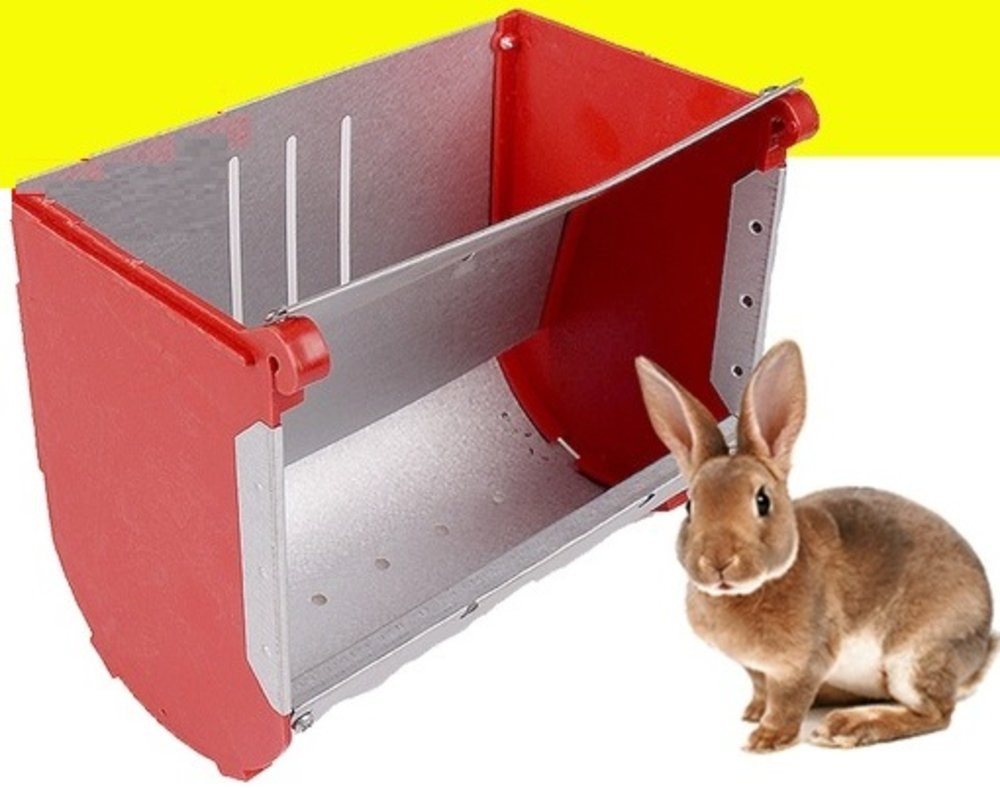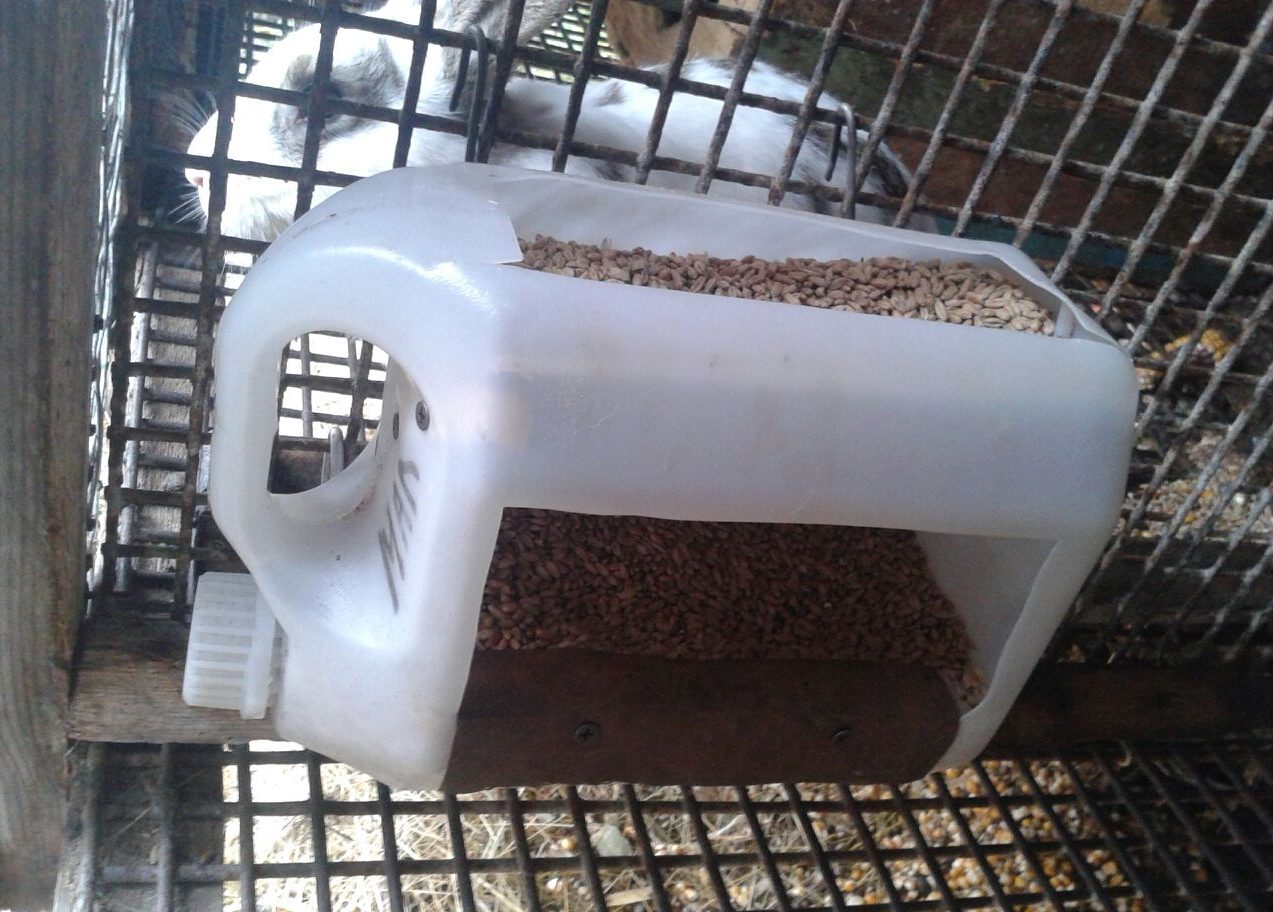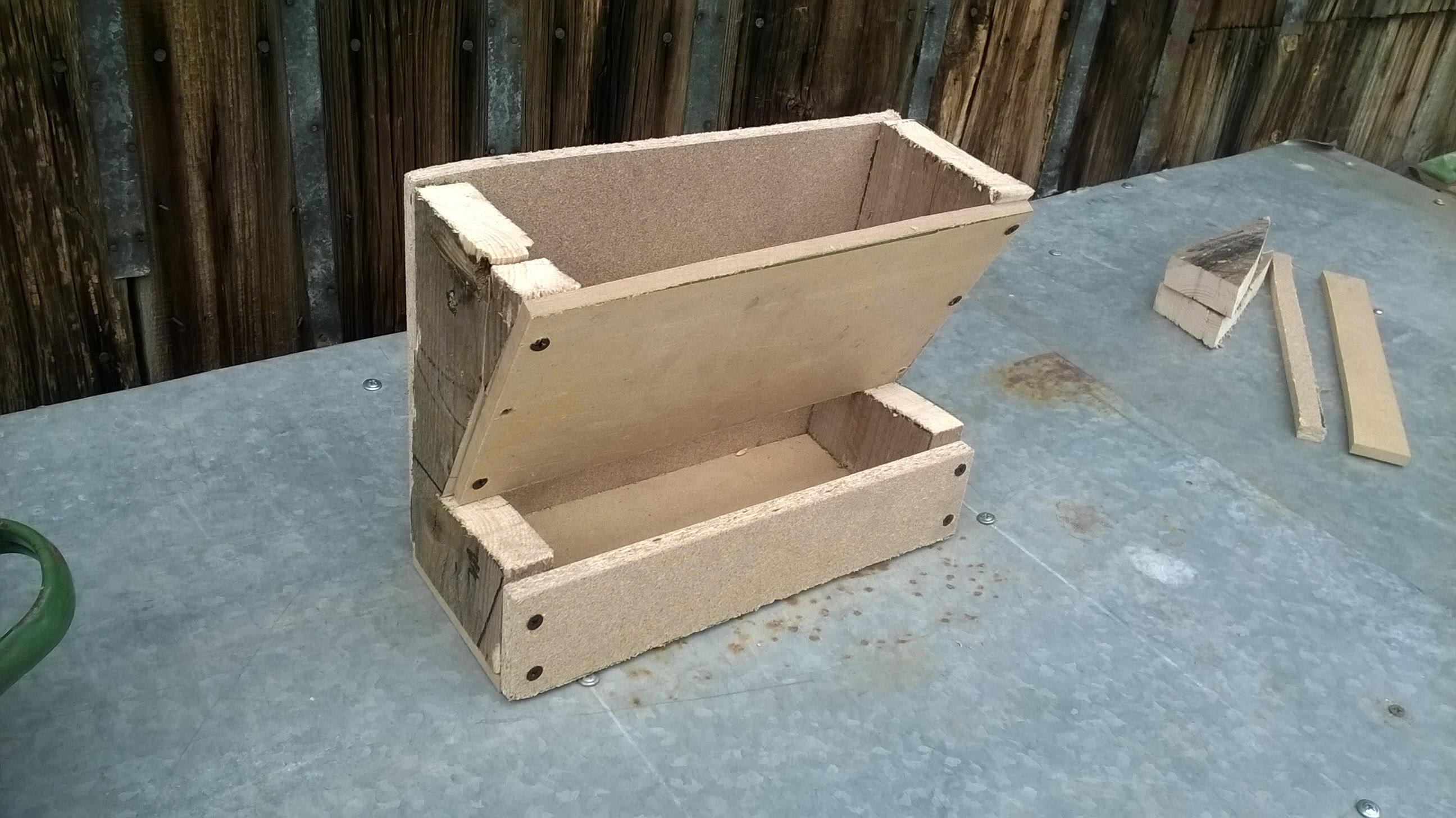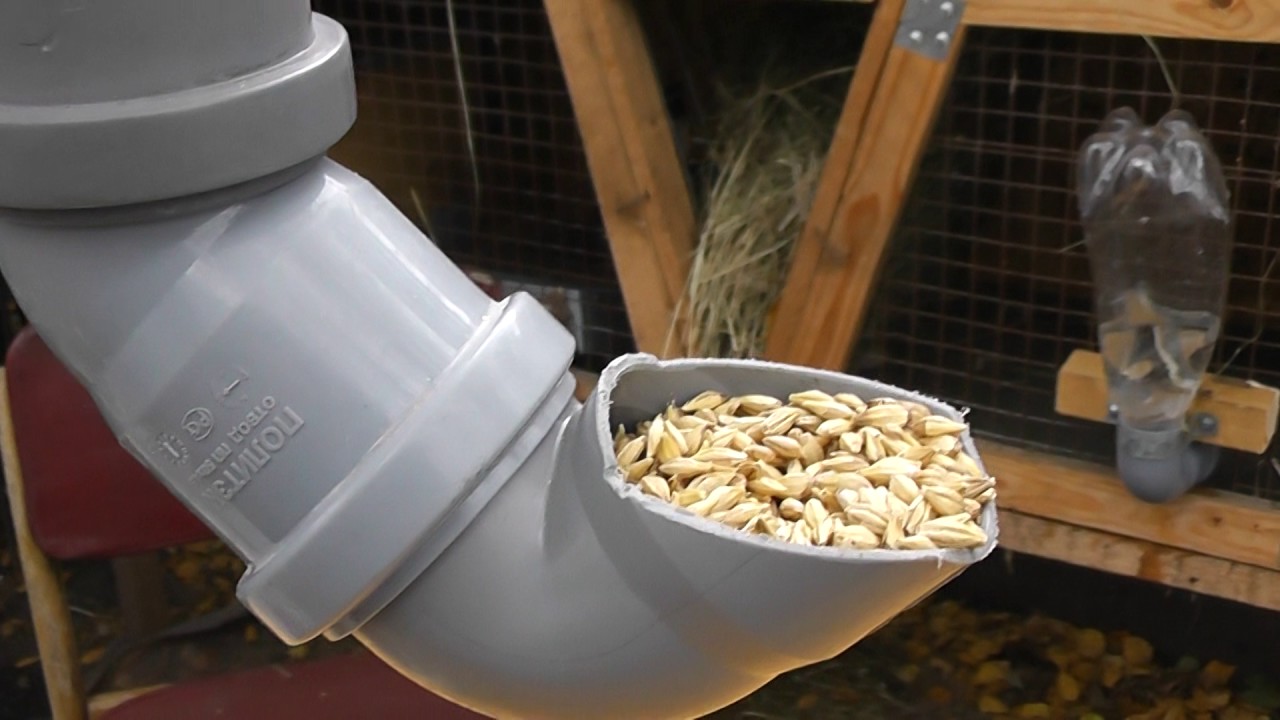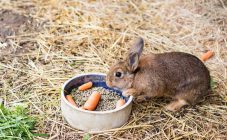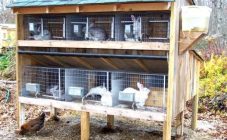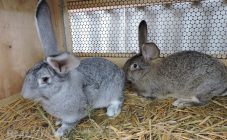Currently, the organization of domestic rabbit farms is gaining popularity. Relative ease of grooming makes rabbits attractive to novice farmers.
Rabbit meat is the most dietary meat, in addition, animals are valuable for the light and warm rabbit fur. In the process of keeping rabbits, the most important condition is the correct and timely feeding of the animals. Fasting for more than one day can lead to the death of an individual.
Installation of a feeder and drinker for rabbits in cages allows you to maintain hygiene standards and maintain cleanliness in the processes of feeding and drinking animals. In addition, feed consumption will be lower due to less loss of feed base during feeding. The animals will have no opportunity to scatter and spoil the feed. You can purchase ready-made installations or make them yourself.
About types of feeders
Feeders differ by purpose. The design must be appropriate for the specific type of feed. Therefore, feeders are distinguished for:
- tops with root crops;
- combined feed;
- cereal nutritional mixtures;
- hay;
- herbs.
All listed containers must be mandatory for filling with a suitable type of feed. In addition, feeders are divided according to the type of device:
- bunker;
- grooved;
- nursery;
- bowls.
Hopper tanks are considered the most convenient. They can be filled with both cereal and granulated feed. Design features allow for even distribution of feed, ensuring constant access. Filling takes place directly into the tank of the trough. A narrow opening extending over the entire container allows the feed to be distributed evenly. The feeding of new portions takes place offline, without the participation of the farmer.
The best material for a hopper feeder is profiled sheet. You can choose wooden planks or plywood, but these materials have a number of disadvantages against the background of a sheet of tin. The metal is easier to clean, contributing to a faster process of cell sanitation. In addition, rabbits will not spoil the feeder, since they are not able to gnaw through a sheet of tin.
Nursery hay feeders are essential because hay is the main diet for rabbits. Most often, such structures are attached to the cage door. This installation makes cleaning easier, but is incorrect. When keeping a rabbit with offspring, rabbits can easily climb into the rabbit sennik, remaining invisible. When the door is opened, the rabbits will fall out of the nursery and may be injured or escape. Therefore, it is recommended to mount the rabbit nursery near the door, but not on it.
You can choose a more versatile design of the trough - trough. It is suitable for filling with different types of feed. You can put hay, grass, grain or root crops in it. Like other types, you can make such a feeder yourself. The name of the feeder is due to the similarity with the gutters. Another advantage is the ability to feed several individuals simultaneously from one feeder.
Cup containers are more suitable for filling with root vegetables. They are removable structures, so there is no need for rigid fastening.They should be easily and quickly removed for cleaning and washing.
Requirements for feeders
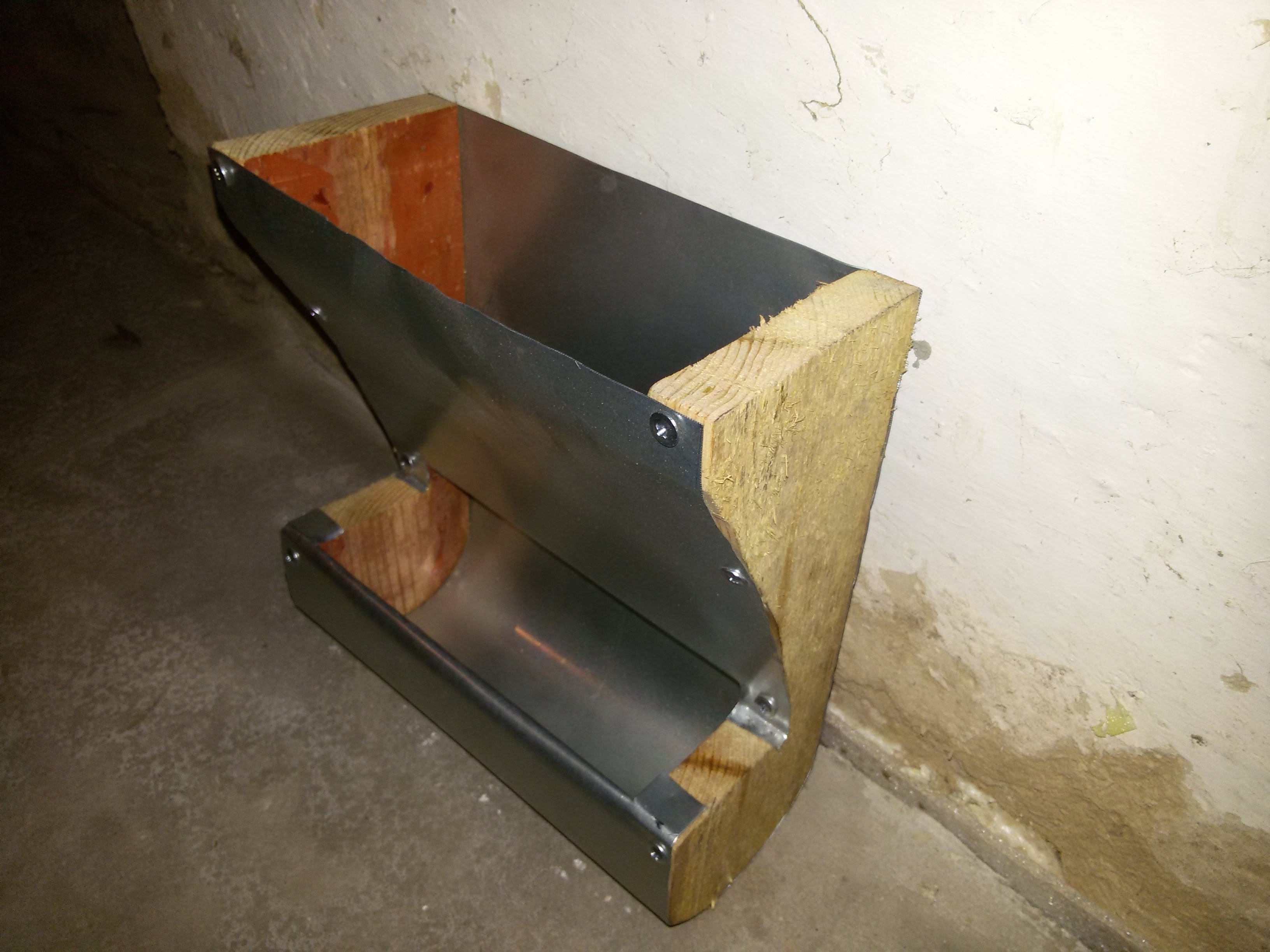
When choosing a different material from metal, it is necessary to exclude the possibility of gnawing the surface
Before purchasing or making it yourself, you must familiarize yourself with the list of necessary requirements for feeders:
- The size should be suitable for the amount of feed required during the day. A larger volume will lead to jumping inside the rabbits, while the food and the cage are contaminated with food residues;
- When choosing an excellent material from metal, it is necessary to exclude the possibility of gnawing the surface;
- By providing good attachments, the risks of tipping the trough can be reduced;
- There should be no burrs, sharp corners. Otherwise, rabbits can get hurt or plant a splinter;
- The material should be easy to clean and not absorb moisture;
- The size of the feeder should be determined taking into account the number of individuals that will use it.
Self-made feeders
Making a do-it-yourself rabbit feeder can reduce the cost of purchasing equipment and adjust the size for individual needs. On the Internet, you can find ideas and drawings for every taste.
The choice of metal sheets as a material has its advantages. The metal is durable, not subject to damage by animals, easy to clean and durable.
The easiest way is to select a tin bowl and secure it. There are several ways to make the mount:
- Roll the protruding parts to the cells of the cage;
- Fasten the hooks to the bowl and hang them by the rods by bending the hooks;
- Having drilled a hole in the bottom, fix it in the bottom frame of the cage. To install such a bowl on 2 adjacent cells, you should choose a large feeder.
You can assemble a bunker feeder according to the following scheme within a few hours:
- assemble the layout out of paper in advance, checking the absence of cracks and protruding parts;
- galvanized metal sheet, 0.4-0.7 mm thick, place according to the drawing;
- cut out the details, forming folds for the side parts, bottom, front and back walls;
- make holes for fastening rivets;
- assemble the structure, securing the folds with rivets.
To make a trough feeder, you need a metal pipe with a diameter of 100-150 mm. Having cut off the top part, it is necessary to close the side holes with plugs to prevent feed spillage.
The choice of a plastic bottle as a starting material is due to the ease of installation and low cost. You will need a 1.5 liter bottle, wire, scissors or a knife. In the middle part of the bottle it is necessary to make a rectangular hole measuring 20x10 cm. Secure with a wire to the rods of the cage at the top and bottom of the bottle for greater stability. The resulting container can be filled with food.
If you have a plastic barrel, depending on its size, you need to cut it into several sectors. After cutting and grinding the sharp parts, you can screw the legs to the finished feeder or fix it to the cage wall.
You can use plastic sewer pipes as a base for the feeder. Their use is due to their low cost. However, there is a danger of chewing on such material. Asbestos-cement or ceramic pipes are more gnaw-resistant, durable and corrosion-resistant. The choice should be stopped on a small pipe diameter within 4-6 cm.
The place of installation of the future structure should be carefully chosen, since it will be non-removable. Having cut the pipe in half, it is necessary to install the plugs from the sides. To prevent jumping inside, you can install a net on the feeder.
Having a gas cylinder, you can adapt it as a feeder. Such a feeder will last for more than a dozen years. The assembly is carried out according to the following instructions:
- Open the gas valve fully. To check that the gas has ended, a soap solution can be applied to the outlet. The absence of air bubbles signals that the cylinder is empty;
- Turning the cylinder over, cut the valve with a hacksaw;
- After filling through the resulting hole with water, it is necessary to wash off the remnants of condensed vapors from the inner surface;
- Having decided on the size of the rabbit feeder, cut the balloon into the required number of parts;
- Weld the legs from metal rods;
- Install the finished structure into the cage.
Automatic rabbit feeder
The main advantage of auto-feeders and auto-drinkers is the time savings of the farmer. The capacity of the feeder can hold several kilograms of grain. As it is emptied, it is filled by gravity from the bunker compartment. One filling of the trough is sufficient to keep rabbits for 1 to 2 weeks, based on the number of individuals.
Automatic feeders can be purchased or made by yourself according to the original drawings of Evgeny Maklyak. The general principle is to install a feed hopper attached to the outside of the cage, connected to a tray inside. When the level of feed in the trough falls, the feed spills out of the hopper by gravity. From the inside of the hopper, it is necessary to install a metal bar at an angle of 30-40 °. It must be fixed between the sides and one end side. A gap must be left between them to regulate the filling of the tray without overfilling.
Purchased feeders are distinguished by the presence of a timer that opens the flow of feed to the tray at specified intervals. Behind the automated process is the connection of a control unit or a computer. Such a system will work completely autonomously. The farmer is left with a minimum amount of work to fill and clean the system.
Summarizing the above, we can say that there is currently a large selection of rabbit feeders. You can purchase any design or assemble it yourself, taking into account the nuances of the grown individuals. The choice of materials at hand for collecting with your own hands is practically unlimited. These can be plastic bottles or barrels, pipes, metal sheets and profiles, or wood. However, the need for disinfection and cleaning should be considered. In addition, the material must be of high strength to avoid damage by rabbits. Compliance with all regulated norms will reduce the time spent on the process of feeding animals.
